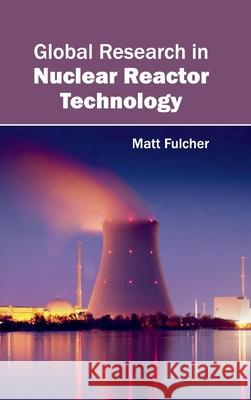Global Research in Nuclear Reactor Technology » książka
Global Research in Nuclear Reactor Technology
ISBN-13: 9781632402509 / Angielski / Twarda / 2015 / 342 str.
This book aims to explain the latest research and technological advances in the field of nuclear reactors. The main topics covered in the book include thermal stratification in PWR piping setup, isothermal based phase transformation leading to manifestation of nuclear fuel, latest procedures to calculate nuclear temperature using Doppler broadening function calculation, Monte Carlo burnup simulation of concentrated gadolinium burnable poison for PWR fuel, study of fuel alloy of uranium-molybdenum, and safety assessment of research reactors. The book also enlightens the reader about thermal hydraulics study for ultra-high temperature reactor with packed sphere fuels, the advantages of using lead-208 for high temperature reactor coolant for fast reactors and acceleration driven systems, the scope of nuclear power as electricity production with reference to Generation III and IV reactors, nanostructural materials and shaped solids for greater energy efficiency towards nuclear reactor safety, waste disposal, and multilateral nuclear approach to fuel cycles. The book also gives a descriptive analysis of the Fukushima nuclear accident.
This book aims to explain the latest research and technological advances in the field of nuclear reactors. The main topics covered in the book include thermal stratification in PWR piping setup, isothermal based phase transformation leading to manifestation of nuclear fuel, latest procedures to calculate nuclear temperature using Doppler broadening function calculation, Monte Carlo burnup simulation of concentrated gadolinium burnable poison for PWR fuel, study of fuel alloy of uranium-molybdenum, and safety assessment of research reactors. The book also enlightens the reader about thermal hydraulics study for ultra-high temperature reactor with packed sphere fuels, the advantages of using lead-208 for high temperature reactor coolant for fast reactors and acceleration driven systems, the scope of nuclear power as electricity production with reference to Generation III and IV reactors, nanostructural materials and shaped solids for greater energy efficiency towards nuclear reactor safety, waste disposal, and multilateral nuclear approach to fuel cycles. The book also gives a descriptive analysis of the Fukushima nuclear accident.











